Best Game Development Laptops 2023: Top Picks for Game Developers
Written by: Hrishikesh Pardeshi, Founder at Flexiple, buildd & Remote Tools.
Last updated: Sep 03, 2024
The best game development laptops are listed below.
- ASUS ROG Zephyrus Gaming Laptop
- ASUS TUF Gaming A15 (2022)
- Lenovo Legion Pro 7i Gaming Laptop
- Razer Blade 16 Gaming Laptop
- MSI Thin GF63 15.6" Gaming Laptop
- GIGABYTE AORUS 17X Gaming Laptop
- HP Envy Business Laptop
- Apple 2023 MacBook Pro Laptop M2 Pro
- Microsoft Surface Laptop 4 13.5" 2K Touchscreen
- LG Gram (2022) 16Z90Q Ultra Lightweight Laptop
As a game developer, I know how essential it is to have a reliable and powerful laptop to bring my ideas to life. With the increasing demand for high-quality games in the market, having a laptop that can handle the pressure of heavy software and graphics is vital. That's why, in today's world, finding the best game development laptop has become a significant element in a developer's journey.
Game development laptops are different from regular gaming laptops due to their unique requirements. While a gaming laptop focuses on running games smoothly, a game development laptop demands stronger hardware and software capabilities such as high-performing processors, abundant memory, and advanced graphics cards. This ensures that various design, coding, and animation software run seamlessly, making developing games a breeze.
When exploring different game development laptops, it's crucial to pay attention to factors such as CPU performance, RAM capacity, GPU strength, and storage options. These components will determine how efficiently the laptop can manage multiple tasks, render 3D models, and compile codes in an accelerated manner.
With that in mind, I have spent a significant amount of time researching and comparing different laptops to provide a comprehensive guide for those in search of the best game development laptop. Let's dive in and discover the perfect machine to elevate your game development experience.
Table of Contents
- Best Game Development Laptops
- ASUS ROG Zephyrus Gaming Laptop
- ASUS TUF Gaming A15 (2022)
- Lenovo Legion Pro 7i Gaming Laptop
- Razer Blade 16 Gaming Laptop
- MSI Thin GF63 15.6" Gaming Laptop
- GIGABYTE AORUS 17X Gaming Laptop
- HP Envy Business Laptop
- Apple 2023 MacBook Pro Laptop M2 Pro
- Microsoft Surface Laptop 4 13.5" 2K Touchscreen
- LG Gram (2022) 16Z90Q Ultra Lightweight Laptop
- Buying Guide
- Frequently Asked Questions
Best Game Development Laptops
I've put together a list of the best game development laptops for you. Check them out below and find the perfect one for your needs!
ASUS ROG Zephyrus Gaming Laptop
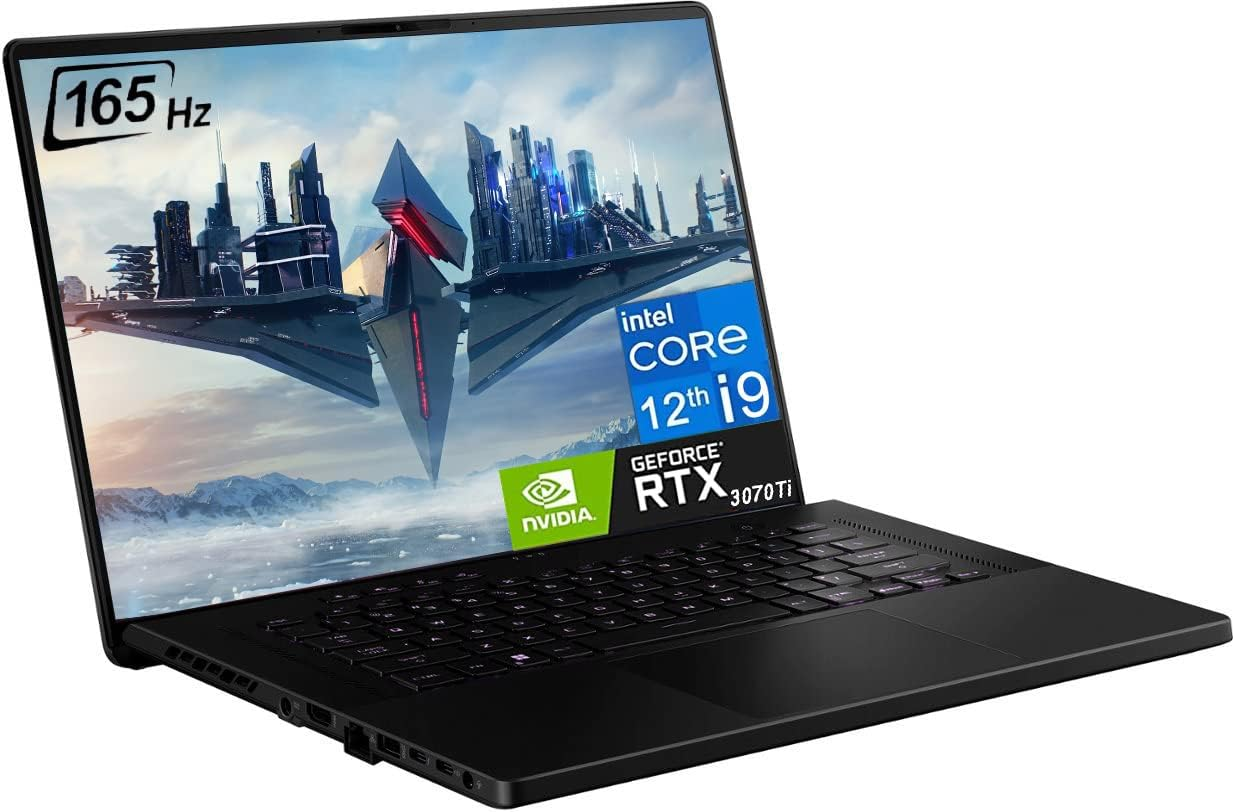
The ASUS ROG Zephyrus Gaming Laptop is a top choice for game developers, thanks to its powerful performance and stunning display.
Pros
- Impressive 12th Generation Intel Core i9-12900H processor
- Stunning NVIDIA GeForce RTX 3070 Ti Graphics
- Beautiful 16" WQXGA 165Hz Display
Cons
- Slightly heavy at 4.41 lbs
- Pricey compared to other options
- No optical drive for those who need it
I recently got my hands on the ASUS ROG Zephyrus Gaming Laptop and let me tell you, it's been a game-changer for my development work. The 12th Generation Intel Core i9 processor teamed up with the NVIDIA GeForce RTX 3070 Ti graphics make game development a breeze, handling complex rendering tasks with ease.
The 16" WQXGA display with a 165Hz refresh rate and 2560x1600 resolution is perfect for creating stunning visuals and keeping everything smooth during development. Moreover, this laptop offers up to 40GB of RAM and up to 2TB solid-state drive, ensuring excellent multitasking capabilities and lightning-fast storage.
Despite its powerful performance, the ASUS ROG Zephyrus is not the lightest laptop around, weighing 4.41 lbs. It may be a bit of a burden if you're always on the go. Additionally, the laptop being on the higher end of the price spectrum may deter some potential buyers. Lastly, the lack of an optical drive may be a drawback for those who depend on physical media.
Overall, the ASUS ROG Zephyrus Gaming Laptop is an excellent choice for game developers seeking a powerful machine with a stunning display. While it has a few minor drawbacks, its performance and capabilities make it worth considering for anyone serious about game development and video game development. If you're looking for premium gaming laptops, also check out this list of the best gaming laptops under $2,000.
ASUS TUF Gaming A15 (2022)
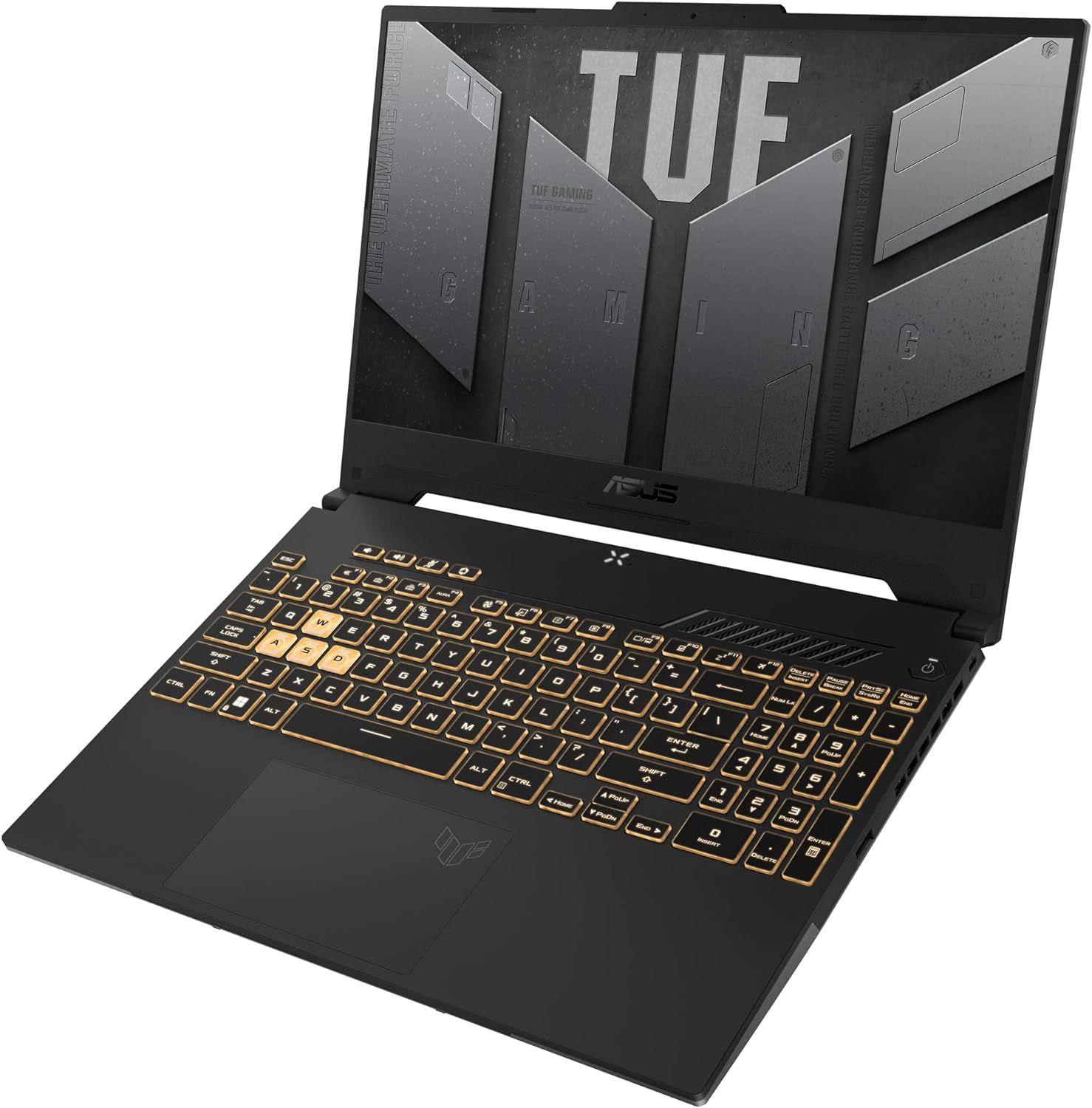
The ASUS TUF Gaming A15 is a solid choice for game developers, offering powerful performance with some minor drawbacks.
Pros
- Exceptional performance with AMD Ryzen 7 6800H CPU and NVIDIA GeForce RTX 3060 GPU
- High-quality 300Hz/3ms 15.6" Full HD IPS Type Display
- Ample and fast storage with 512GB PCIe NVMe M.2 SSD
Cons
- Battery life may be insufficient depending on usage
- Can get quite hot during intense gaming sessions
- Some users may find the laptop to be on the heavier side at 4.85 pounds
I recently got my hands on the ASUS TUF Gaming A15, and it's been a delight to use for developing and testing games. The performance is impressive, with the AMD Ryzen 7 6800H CPU and NVIDIA GeForce RTX 3060 GPU smoothly handling resource-intensive tasks and modern game engines.
The display is a real standout, offering a 300Hz refresh rate and a 3ms response time, making everything look incredibly crisp and fluid. The sRGB color coverage ensures accurate colors, which is essential for game development.
The battery life, however, left me longing for more, especially when working on the go. I often find myself needing to plug it in more frequently than I'd like. The laptop also tends to warm up during extended gaming sessions, but the self-cleaning dual fans with anti-dust technology do their best to prevent overheating.
The ASUS TUF Gaming A15 may be a bit on the heavier side, but its military-grade toughness adds to its durability, which is a worthwhile trade-off for many. Overall, the ASUS TUF Gaming A15 is a solid game development laptop with excellent performance, quality display, and robust storage capabilities, despite its few cons.
Lenovo Legion Pro 7i Gaming Laptop
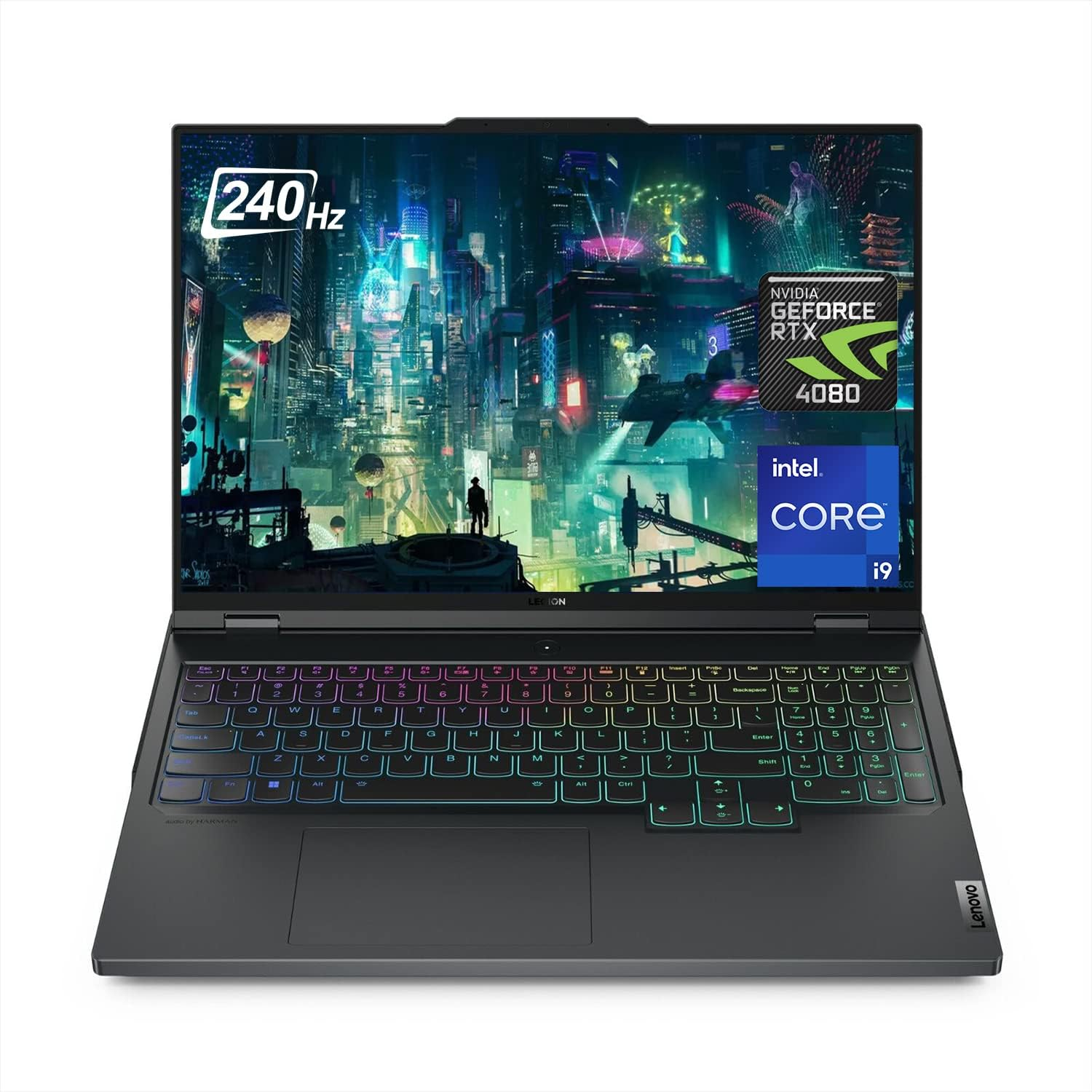
This Lenovo Legion Pro 7i is a fantastic choice for game developers seeking great performance, visuals, and build quality.
Pros
- Exceptionally powerful CPU and GPU combination
- Vivid, high-refresh-rate WQHD display
- Generous storage and RAM configurations
Cons
- Somewhat heavy to carry around
- Limited battery life
- Pricey, especially on the higher-end models
I recently tried out the Lenovo Legion Pro 7i, and it quickly became one of my favorite laptops for game development. The 13th Gen Intel Core i9 CPU paired with the NVIDIA GeForce RTX 4080 GPU provided incredibly smooth performance, allowing me to run even the most demanding game development tasks with ease. This machine truly packs a punch and is a serious contender for your game dev needs.
One of the standout features of this laptop is the 240Hz 16-inch WQHD IPS display. I found it to be visually stunning, with sharp, crisp image quality. The high refresh rate also helped in making animations feel more fluid during my development process. The screen's resolution and color reproduction make it perfect for any visual work like 3D modeling or texture painting.
The Legion Pro 7i also offers a huge amount of storage and memory with its 2TB + 2TB SSD and 64GB DDR5 RAM. This allowed me to multitask seamlessly and keep multiple development applications running simultaneously without a hitch. Moreover, the laptop's build quality and design felt premium, with the RGB backlit keyboard adding a touch of flair to the overall aesthetics.
However, as expected, I found the laptop to be quite heavy, which might make it less portable for some users. Additionally, the battery life wasn't very impressive, especially under heavy load. Lastly, the price may be steep for some, particularly when considering the higher-end models.
All in all, the Lenovo Legion Pro 7i is an excellent laptop for game development, with a powerful processor, fantastic display, and ample storage. If you can handle the weight and price, this machine will undoubtedly help you create amazing gaming experiences.
Razer Blade 16 Gaming Laptop
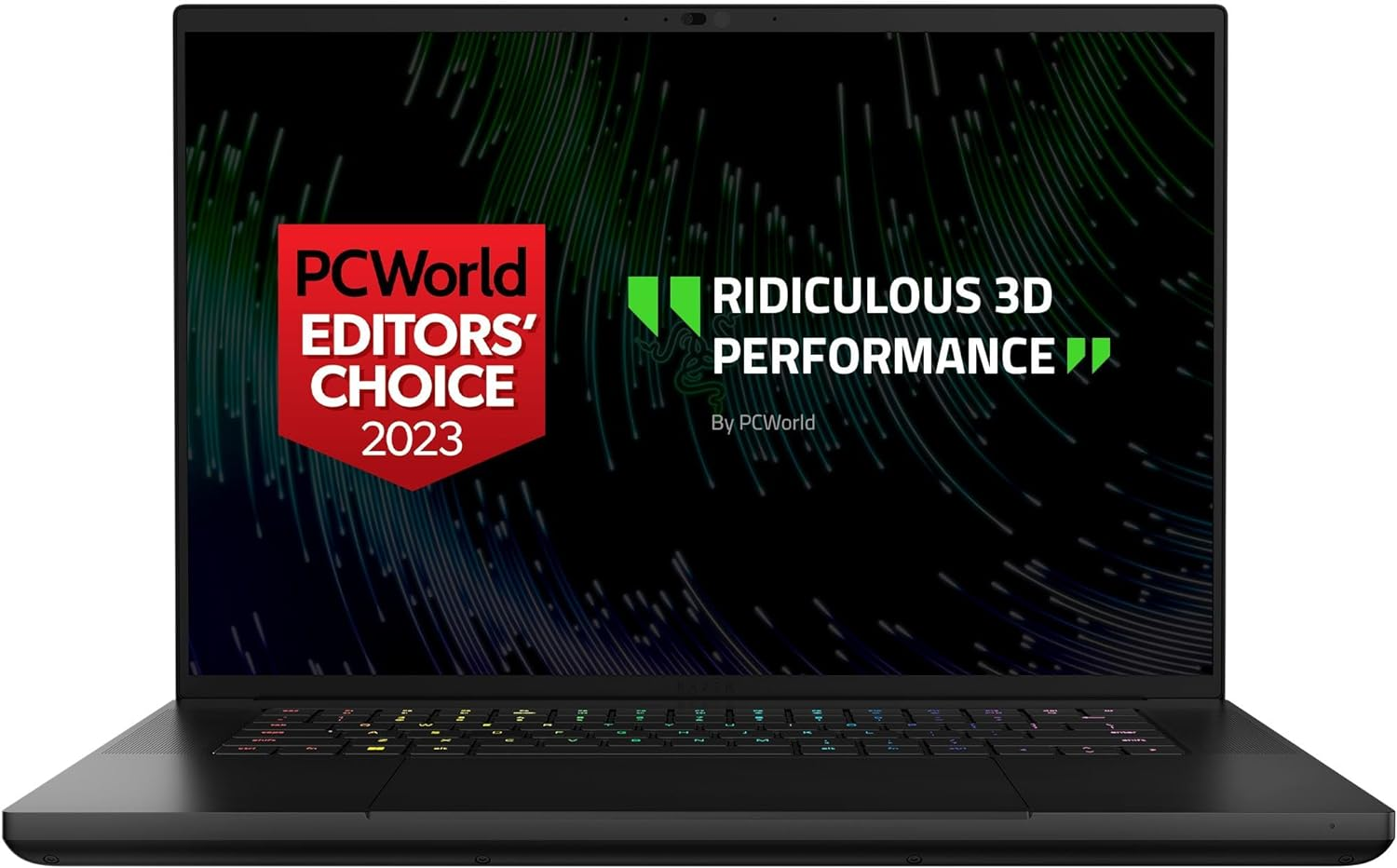
This laptop is a powerful choice for game developers, although it has a few minor drawbacks.
Pros
- Powerful NVIDIA GeForce RTX 4080 graphics
- Impressive 13th Gen Intel Core i9 processor
- Compact design with a 16-inch QHD+ display
Cons
- Heats up under intensive tasks
- Subpar battery life
- Expensive for some budgets
I recently got my hands on the Razer Blade 16 Gaming Laptop, and it has been an absolute delight to use for game development. The NVIDIA GeForce RTX 4080 graphics card allows for smooth and detailed graphics rendering, making it perfect for designing intricate game environments and characters.
The 13th Gen Intel Core i9 processor is incredibly fast, enabling me to run resource-intensive tasks like compiling code, rendering scenes, and playing demanding games without any stuttering or slowdowns. Additionally, the 16-inch QHD+ display ensures a high level of detail, which is essential for any developer looking for the best visual experience.
One downside to the Razer Blade 16 is its tendency to heat up during resource-intensive tasks. While it's not a deal-breaker, I'd recommend investing in a good cooling pad to keep the temperature in check. Another drawback is its battery life, which is underwhelming when running demanding tasks. You'll want to keep the charger close by when working on your game development projects.
Finally, the price is definitively on the higher end, so it might not be suitable for everyone's budget. However, given the specifications and performance of the Razer Blade 16, you're definitely getting what you pay for.
Overall, the Razer Blade 16 Gaming Laptop offers an impressive combination of performance and portability that's perfect for game developers. However, it's important to weigh the pros and cons before making a decision, as the laptop does come with some minor drawbacks.
MSI Thin GF63 15.6" Gaming Laptop

I think this laptop is an excellent choice for gaming and development enthusiasts due to its powerful specs and stunning display.
Pros
- Powerful 12th Gen Intel Core i7 processor
- High-speed SSD and DDR4 memory
- Efficient Cooler Boost 5 cooling system
Cons
- The single fan setup can get noisy
- Charger durability might be an issue
- Battery life could be better
I recently had the chance to try out the MSI Thin GF63 15.6" gaming laptop and was genuinely impressed with its performance. The 12th Gen Intel Core i7 processor packs a punch, providing seamless gameplay and smooth multitasking. Whether I'm working on game development projects or simply relaxing with some of my favorite titles, this laptop delivers impressive performance.
The SSD Gen 4x4 and DDR4-3200 memory are particularly crucial for fast data transfer, system speed, and responsiveness. I found this extremely beneficial when using resource-intensive applications like Unity or Unreal Engine, as it meant I could focus more on the creative process and less on waiting for things to load.
The Cooler Boost 5 cooling system is an excellent addition to this laptop, featuring two fans and six heat pipes for optimal thermal dissipation. This makes the MSI Thin GF63 perfect for longer gaming sessions or in-depth development work without the worry of overheating. However, the single fan can get quite noisy, which might be a downside for some users.
One potential issue I encountered is that some users reported their chargers stopped working within a year, so I would be cautious about the charger's durability. Furthermore, although the battery life is decent for a budget gaming laptop anyway, it could be better, especially when running power-hungry applications.
Overall, I am delighted with the MSI Thin GF63 15.6" gaming laptop. It offers excellent performance, greatly enhancing my game development and gaming experience. However, I would advise prospective buyers to be aware of the minor drawbacks, such as charger durability and battery life, before hitting the purchase button.
GIGABYTE AORUS 17X Gaming Laptop

I highly recommend the GIGABYTE AORUS 17X for game developers, thanks to its powerful performance and stunning display.
Pros
- Exceptional graphics with NVIDIA GeForce RTX 4090
- High-speed Intel Core i9-13900HX processor
- Impressive 2TB SSD storage
Cons
- Can be quite hefty at 6.17 pounds
- Slightly larger dimensions: 15.6 x 11.5 x 0.86 inches
- Pricey for budget-conscious shoppers
As a game developer, I truly appreciated the GIGABYTE AORUS 17X when working on my latest project. The NVIDIA GeForce RTX 4090 GPU and 32GB of swift DDR5 RAM really took the performance to the next level. I could run several resource-intensive applications without experiencing any hiccups or lags.
I found the 17.3" thin-bezel QHD 2560x1440 display quite remarkable, displaying crisp visuals and vibrant colors, with a 240Hz refresh rate that proved especially useful in fine-tuning the intricate details of my game's graphics. Furthermore, its compatibility with 100% DCI-P3 color gamut and TÜV Rheinland Certification ensured that I was experiencing the most accurate colors possible.
In terms of connectivity, the Intel Wi-Fi 6E and Bluetooth V5.2 kept my laptop well-connected, while the DTS Ultra audio technology provided immersive sound for both in-game and out-of-game experiences. The only downside is the laptop's weight, which might not make it an ideal on-the-go companion. Nonetheless, if you're searching for a top-notch game development laptop, the GIGABYTE AORUS 17X is undoubtedly worth the investment.
HP Envy Business Laptop
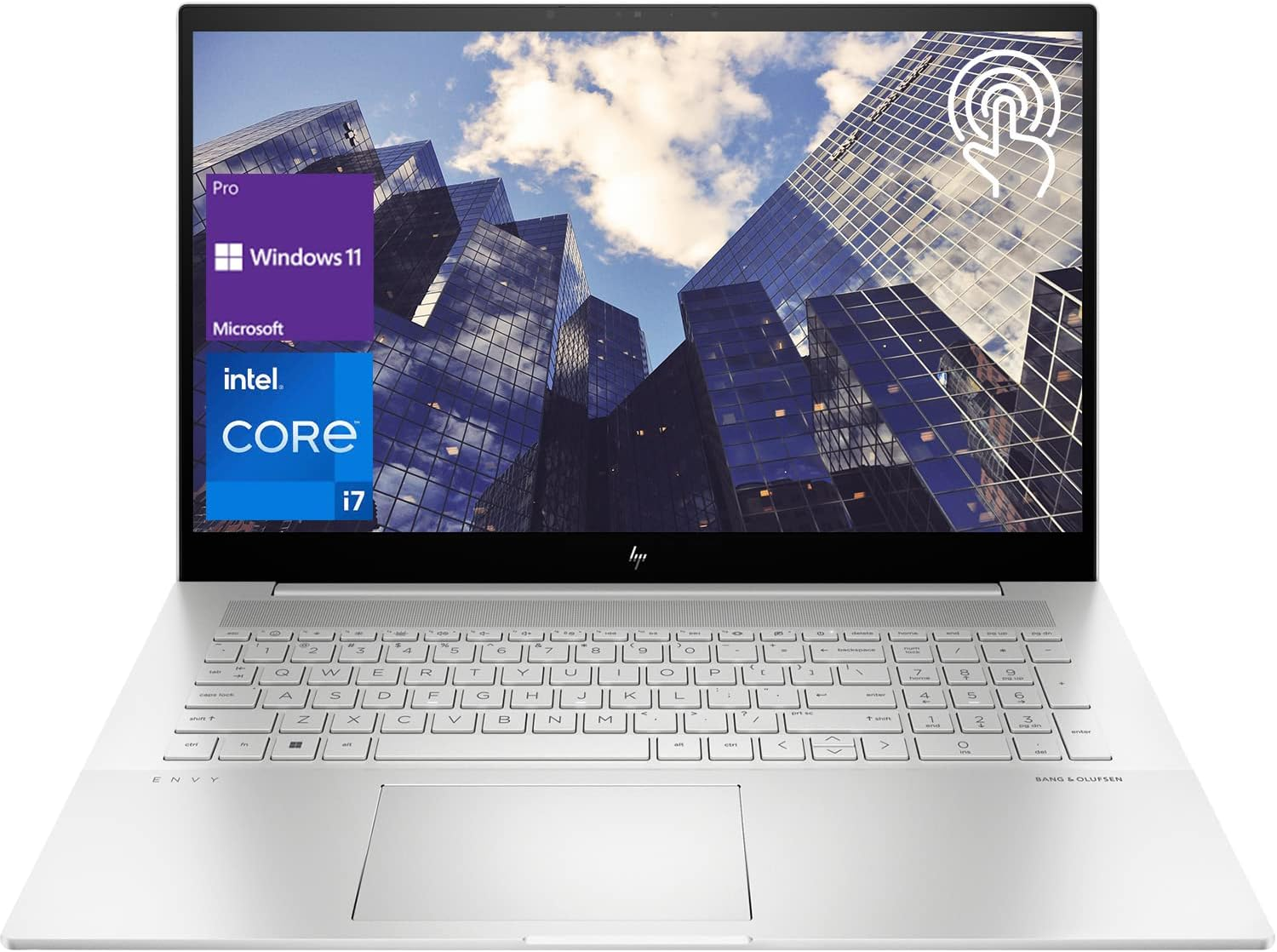
This HP Envy Business Laptop is a solid choice for game development, with its powerful performance and generous storage capacity.
Pros
- Impressive 32GB RAM and 2TB SSD
- 12th Gen Intel Core i7-1260P Processor for smooth multitasking
- 17.3" FHD Touchscreen display for excellent visuals
Cons
- Heavier than expected at 5.49 pounds
- Battery life may be insufficient for extended use
- Backlit keyboard could be difficult to see during daylight
The first thing I noticed when I started up this HP Envy Business Laptop was how quickly it booted up. The 32GB RAM and 2TB PCIe SSD make for a speedy experience, especially when multitasking between game development software and other applications. The 12th Gen Intel Core i7-1260P Processor powers through tasks without any noticeable hiccups, making it ideal for handling the demands of game development.
The 17.3" FHD touchscreen impressed me with its vibrant colors and sharp images. The display's size and quality make it a great canvas for working on game design. Additionally, the multitouch-enabled features and edge-to-edge glass design added a sense of luxury and responsiveness to the overall user experience.
While this laptop has impressive specs, a couple of drawbacks stood out to me. First, the backlit keyboard can be difficult to see during daylight, making typing a bit of a challenge. In addition, the laptop is heavier than expected, weighing in at 5.49 pounds, which makes it less portable for on-the-go game developers. Lastly, the battery life may not be sufficient for an extended period of use without charging, which could limit its mobility.
In conclusion, the HP Envy Business Laptop is a powerful machine that can handle the complex tasks associated with game development. Its 32GB RAM, 2TB SSD storage, and 12th Gen Intel Core i7-1260P Processor make it an excellent investment for game developers seeking a high-performing laptop. Although it has a few drawbacks, such as its weight and battery life, its strengths certainly outweigh its cons.
Apple 2023 MacBook Pro Laptop M2 Pro
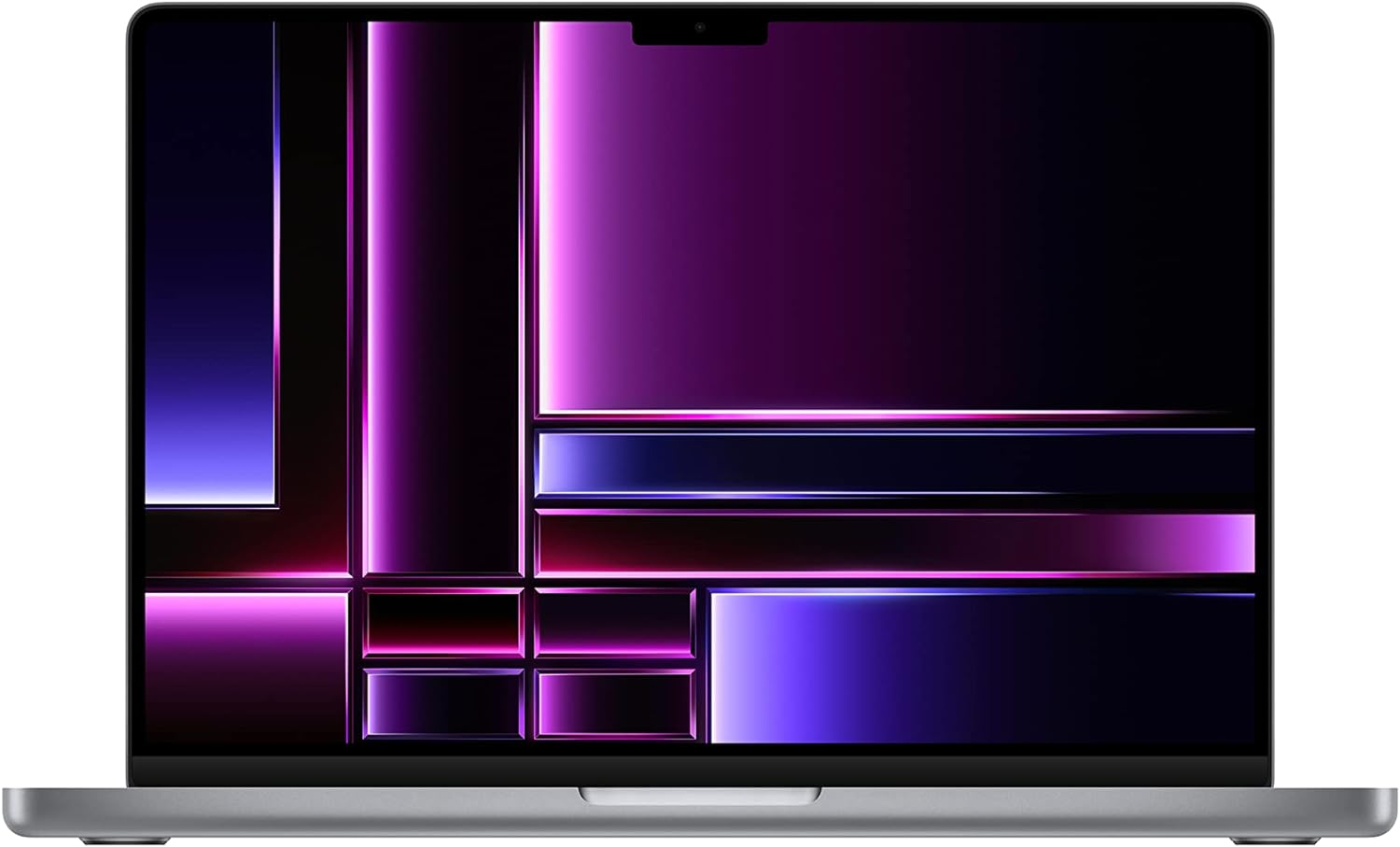
The Apple 2023 MacBook Pro is an excellent choice for game development, offering a powerful M2 Pro chip and an impressive 14.2-inch Liquid Retina XDR display.
Pros
- Supercharged performance with the M2 Pro chip
- Beautiful 14.2-inch Liquid Retina XDR display
- Long-lasting 18-hour battery life
Cons
- On the expensive side
- Heavier than alternatives like the MacBook Air
- Limited to Mac OS and compatible applications
I recently started using the Apple 2023 MacBook Pro Laptop M2 Pro for my game development projects, and I've been genuinely impressed with its performance. The M2 Pro chip allows me to work on demanding projects smoothly, without any slowdowns or frustrating lag.
The 14.2-inch Liquid Retina XDR display is stunning, making it a pleasure to work on my games and even enjoy some downtime watching movies or browsing the web. The colors are vivid, and the brightness is exceptional, especially when working on HDR content.
One of the standout features of this MacBook Pro is the long-lasting 18-hour battery life. I can work all day without needing to charge it, and when I do need to plug it in, the MagSafe charging port makes it quick and easy. The laptop also has a wide range of connectivity options, including Thunderbolt 4 ports, an SDXC card slot, an HDMI port, and a headphone jack.
However, it's worth noting that this laptop is more expensive than other options on the market, and the weight might be an issue for some users. Additionally, if you're used to working with a specific game development software that isn't compatible with Mac OS, you may need to look for alternatives or invest time in learning new software.
Overall, the Apple 2023 MacBook Pro Laptop M2 Pro is a powerful and reliable choice for game developers looking for top-notch performance and stunning visuals. As long as you're comfortable with the price point and Mac OS, it's an investment that will significantly enhance your game development experience.
Microsoft Surface Laptop 4 13.5" 2K Touchscreen
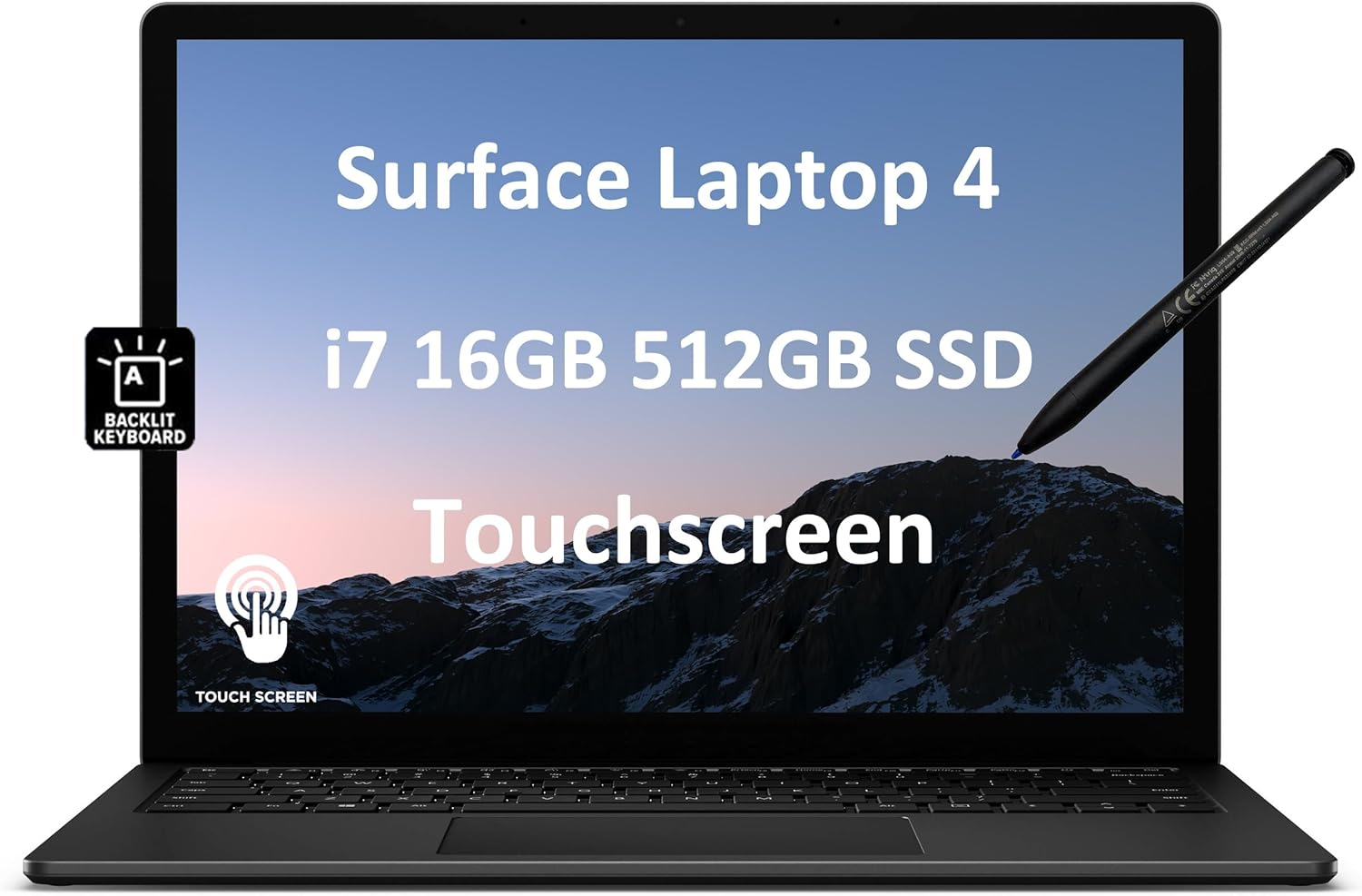
For game developers looking for a versatile and powerful laptop, Microsoft Surface Laptop 4 is a solid choice with a sleek design and impressive performance.
Pros
- Excellent multitasking and speed
- High-quality 2K touchscreen
- Long battery life up to 17 hours
Cons
- Limited ports selection
- Premium price point
- Integrated graphics might be limiting for intensive 3D game development
I recently got my hands on the Microsoft Surface Laptop 4 and it quickly became my go-to device for game development. The laptop's performance is exceptional, with its Intel Core i7-1185G7 and 16GB RAM providing ample power for multitasking, running game engines, and tackling demanding tasks.
The 13.5-inch 2K touchscreen is a true standout feature. It offers an immersive 3:2 aspect ratio that works perfectly with Microsoft 365 apps. The touchscreen is responsive, accurate, and enhances my workflow, making it an absolute pleasure to use on a daily basis. Additionally, the sleek and thin design makes it very portable, perfect for taking it to meetings or working on-the-go.
However, there are a few drawbacks to keep in mind. Firstly, the Surface Laptop 4 has a limited selection of ports, with just one USB-C, one USB-A, and a SurfaceConnect port. This might be an issue for those who require multiple connections for peripherals or external monitors. Secondly, the laptop's price point is premium, making it a significant investment for some. Lastly, the integrated Intel Iris Xe Graphics might be limiting for more intensive 3D gaming and game development, so take that into consideration if you require dedicated graphics.
Nevertheless, the Microsoft Surface Laptop 4 is incredibly versatile and powerful, making it a fantastic choice for game developers looking for a reliable and stylish device. The exceptional performance, sleek design, and long battery life make it an affordable gaming laptop worthy of serious consideration.
LG Gram (2022) 16Z90Q Ultra Lightweight Laptop
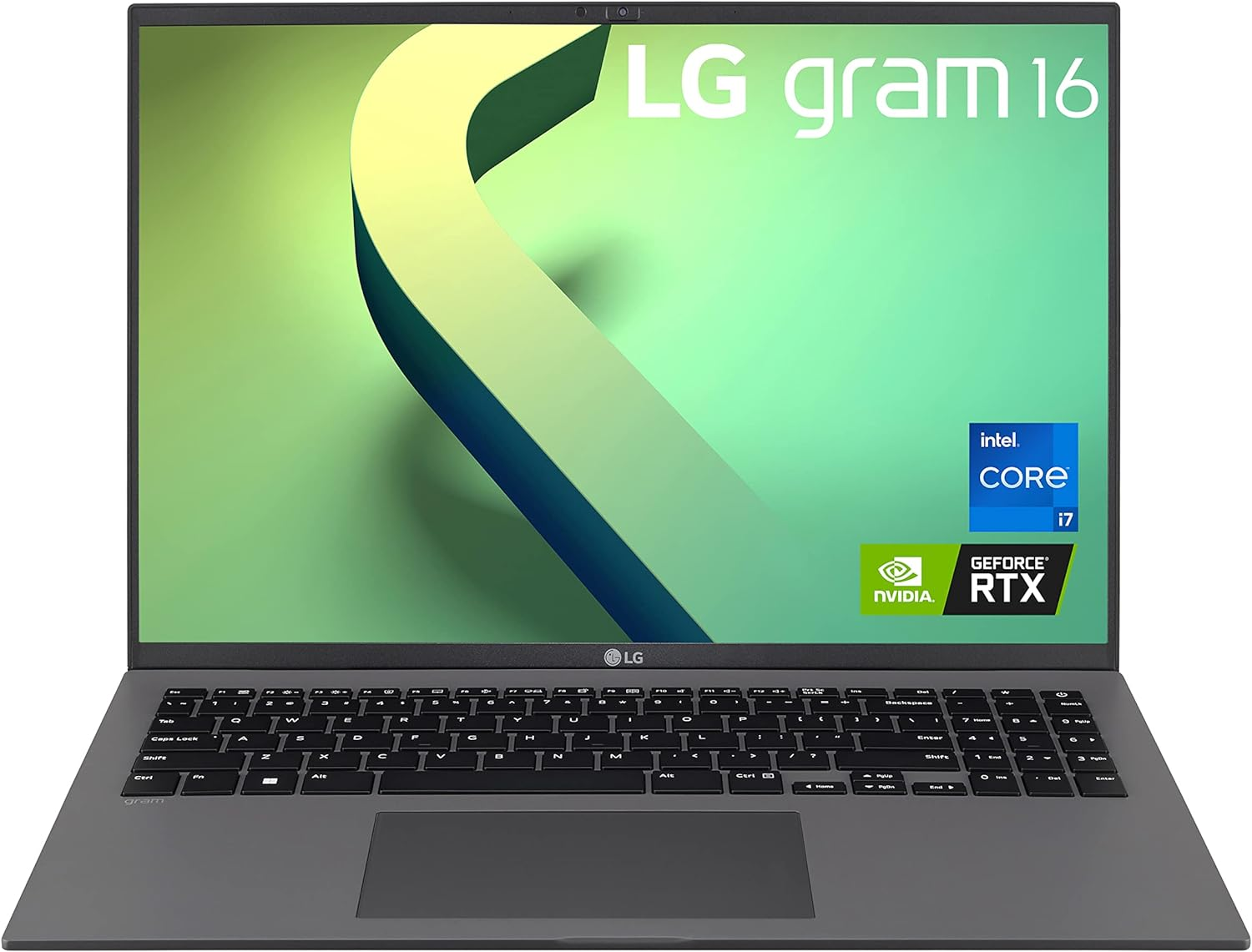
The LG Gram (2022) is an ideal choice for game developers seeking an ultra-lightweight, powerful laptop with impressive performance.
Pros
- Ultra-lightweight, perfect for portability
- Excellent 16" WQXGA non-reflective IPS display
- Powerful Intel i7 processor and NVIDIA RTX2050 GPU
Cons
- Keyboard may heat up during video editing
- Lacks a fingerprint reader
- Render times could be faster
I recently had a chance to use the LG Gram (2022) 16Z90Q laptop and was quite impressed by its performance. As a game developer, I'm always on the lookout for a laptop that can handle the rigors of my work without weighing me down, and the LG Gram does just that. Its ultra-lightweight design allowed me to easily bring it with me wherever I went, making my work process much more efficient.
One of the standout features of this laptop is its remarkable 16" WQXGA non-reflective IPS display with a DCI-P3 99% color gamut. The display truly showcases the depth and vibrancy of my game's graphics, adding a touch of realism that helps bring my visions to life. Coupled with its powerful 12th Gen Intel Core i7 processor and NVIDIA RTX2050 GPU, I found that this laptop could easily handle the demands of my game development projects.
However, there are a few drawbacks to the LG Gram (2022). While working on some intense video editing sessions, I noticed that the keyboard had a tendency to heat up, which was slightly uncomfortable during prolonged use. Furthermore, the lack of a fingerprint reader was somewhat disappointing, as it would have added a layer of convenience to accessing the device. Lastly, the render times could have been faster, but this is a minor issue for my needs.
Overall, the LG Gram (2022) 16Z90Q Ultra Lightweight Laptop offers an exceptional blend of portability, performance, and display quality that makes it a fantastic option for game developers looking for a reliable companion. With its few minor drawbacks in mind, this budget laptop really is still a brilliant choice for professionals seeking a high-quality device on which to create their projects.
Buying Guide
Alright, so you're looking for the best laptops for game development? Let me give you some tips on how to choose the one that suits you best. First, I'd like to talk about a few essential features that will make your life as a game developer easier.
Processor
It's vital to have a powerful processor for your game development needs. A faster CPU will help you compile and run your projects quickly and efficiently. Look for quad-core or higher processors to make sure your laptop can keep up with the workload.
Graphics Card
Having a dedicated graphics card is crucial for game development, especially if you're working with 3D assets and games. Look for something that supports recent versions of DirectX, OpenGL, and Vulkan to ensure compatibility with your development tools.
RAM
You'll want plenty of RAM to handle multi-tasking and running resource-intensive programs. I recommend at least 16GB for game development, but 32GB would be even better to ensure smooth performance.
Storage
Fast storage is essential, as you'll be working with large files and frequently saving your progress. I suggest going for an SSD, which is much faster than a traditional HDD, to speed up your workflow.
Display
A high-quality display is necessary for game development, as you'll want to accurately assess colors and visuals. Look for a screen with a resolution of 1920x1080 or higher, and pay attention to color gamut coverage and contrast ratios.
Battery Life
While game development can be quite demanding, having a decent battery life is always helpful. It may not be the most critical factor, but it's nice to have a laptop that doesn't need to be plugged in all the time.
These are the features you should consider when choosing the best game development laptop for yourself. Remember to do thorough research and read reviews on potential options you find. Good luck on your quest to find the perfect laptop!
Frequently Asked Questions
What are the minimum laptop requirements for game development?
In my experience, the minimum laptop requirements for game development include at least an Intel Core i5 or equivalent processor, 8GB of RAM, and a dedicated graphics card like the NVIDIA GeForce GTX 1050 or better. You'll also need ample storage, so a 256GB SSD or a 1TB HDD is recommended. However, keep in mind that requirements may vary depending on which game engine or software you're using.
Are gaming laptops suitable for game development?
Yes, gaming laptops can be suitable for game development. They often come with powerful processors, high-quality graphics cards, and enough RAM to handle demanding tasks associated with game development, such as running game engines and 3D modeling software. However, they can be more expensive than traditional laptops, so it's essential to ensure the best laptop that meets your game development needs.
Which budget laptops can handle Unity and Blender?
There are several budget-friendly laptops capable of handling Unity and Blender:
- Acer Aspire E 15: Comes with an 8th generation Intel Core i5 processor, NVIDIA GeForce MX150 graphics, 8GB RAM, and a 256GB SSD.
- Lenovo Ideapad L340: Features a 9th generation Intel Core i5 processor, NVIDIA GeForce GTX 1650 graphics, 8GB RAM, and a 512GB SSD.
Remember, these are budget laptops, so performance may not be as smooth as higher-end options.
What are the top game dev laptops under $1,000?
Here are a few options for game development laptops under $1,000:
- Acer Predator Helios 300: Includes a 10th generation Intel Core i5 processor, NVIDIA GeForce RTX 2060, 16GB of RAM, and a 512GB SSD.
- Dell G3 15: Comes with a 10th generation Intel Core i5 processor, NVIDIA GeForce GTX 1650 Ti, 16GB of RAM, and a 512GB SSD.
These laptops should provide satisfactory performance for most game development tasks.
What specs should I consider when choosing a game development laptop?
When choosing a game development laptop, consider the following specs:
- Processor: at least an Intel Core i5 or equivalent.
- RAM: 16GB is ideal, but 8GB can work for most tasks.
- Graphics Card: a dedicated GPU like an NVIDIA GeForce GTX 1050 or higher.
- Storage: a 256GB SSD or larger, or a 1TB HDD.
Keep in mind the requirements may vary depending on the game engine and software you plan to use.
Which laptops do professional game developers prefer?
Professional game developers often choose high-performance laptops such as the ASUS ROG Zephyrus or the MSI GS Series. These laptops typically feature powerful processors, dedicated GPUs like the NVIDIA GeForce RTX 2070 or higher, ample RAM and storage, and even high-refresh-rate displays that are beneficial for both game development and gaming. However, it's essential to consider your specific needs and preferences since professionals' preferences may vary based on their work.